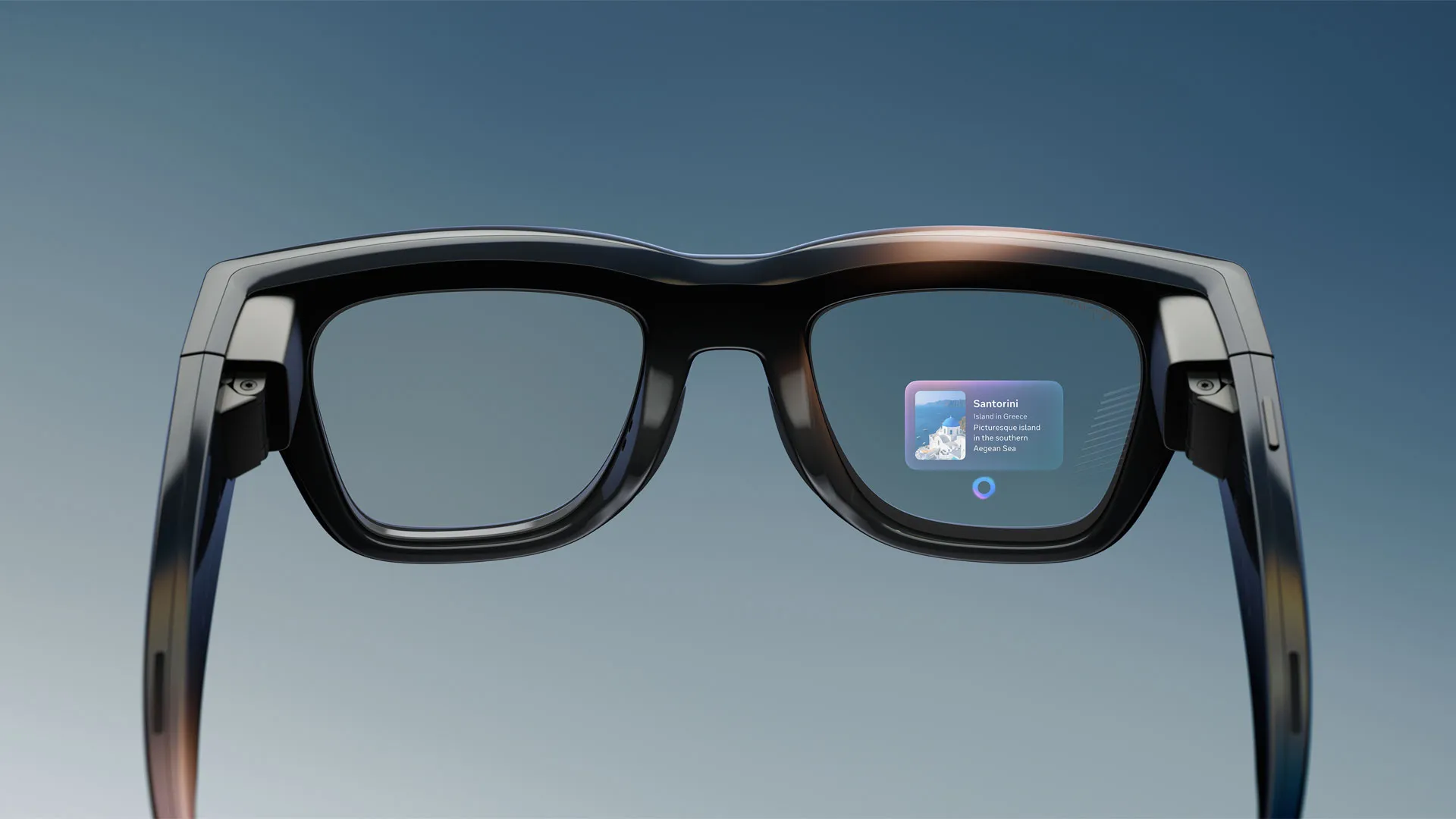Meta has always dreamed big about augmented reality (AR). From the early Oculus headsets to the Meta Quest line, the company has pushed hard to merge the digital and physical worlds. But at Meta Connect 2025, the spotlight shifted to a product that feels both futuristic and wearable today: the Meta Ray-Ban Display.
This new generation of smart glasses combines full-color micro-displays inside the lenses with a Neural Band for gesture control, transforming the classic Ray-Ban look into a gateway to augmented reality.
Let’s explore what the Meta Ray-Ban Display is, its key features, use cases, and why it could be the product that finally makes smart glasses mainstream.
What Is the Meta Ray-Ban Display?
The Meta Ray-Ban Display is the latest evolution of Meta’s partnership with Ray-Ban (Luxottica). Unlike earlier models, which focused mostly on cameras, audio, and livestreaming, this version introduces a true heads-up display inside the lenses.
The big leap: you can now see digital overlays, notifications, and AR visuals projected in your field of vision, while still wearing what looks like a stylish pair of Ray-Bans.
Key Features of Meta Ray-Ban Display
- Full-Color Lens Displays
- Miniaturized micro-displays project vibrant visuals directly into the lens.
- Supports notifications, navigation directions, translation overlays, and lightweight AR apps.
- Miniaturized micro-displays project vibrant visuals directly into the lens.
- Neural Band Gesture Control
- Worn like a slim bracelet, the Neural Band detects neural signals from your wrist muscles, letting you control the glasses with subtle gestures (pinch, swipe, tap in mid-air).
- Eliminates the need for constant voice commands or touchpads.
- Worn like a slim bracelet, the Neural Band detects neural signals from your wrist muscles, letting you control the glasses with subtle gestures (pinch, swipe, tap in mid-air).
- AI Integration
- Powered by Meta AI, the glasses can answer questions, translate text on the fly, summarize notifications, and generate content prompts.
- Powered by Meta AI, the glasses can answer questions, translate text on the fly, summarize notifications, and generate content prompts.
- Camera & Audio
- High-quality camera for photos, videos, and livestreams.
- Built-in speakers for immersive but discreet audio.
- High-quality camera for photos, videos, and livestreams.
- Style Factor
- Retains the classic Ray-Ban Wayfarer and Aviator designs, blending technology with timeless fashion.
- Retains the classic Ray-Ban Wayfarer and Aviator designs, blending technology with timeless fashion.
Why Meta Ray-Ban Display Matters
Smart glasses have been around for a while, remember Google Glass? But none have cracked the mainstream. Meta believes Ray-Ban Display changes that because it nails three critical elements:
- Style: Looks like a normal pair of Ray-Bans, not a bulky headset.
- Utility: Notifications, AI assistance, real-time translation, and AR overlays.
- Control: Neural Band interaction feels futuristic yet intuitive.
If it works as promised, Ray-Ban Display could do for AR what the iPhone did for mobile internet — make it both useful and cool.
How It Compares to Other AR Glasses
| Feature | Meta Ray-Ban Display | Apple Vision Pro (2024) | Google Glass (2013) | Snap Spectacles |
| Display in Lens | ✅ Full-color micro-display | ✅ Mixed reality headset | ✅ Basic HUD | ❌ |
| Gesture Control | ✅ Neural Band | ✅ Eye/hand tracking | ❌ | ❌ |
| Form Factor | ✅ Stylish Ray-Ban frames | ❌ Bulky headset | ❌ Industrial look | ✅ Fashion |
| AI Integration | ✅ Meta AI | ✅ Apple Intelligence | Limited | Limited |
| Target Use | Everyday AR | Premium productivity | Niche dev tool | Social video |
Meta’s advantage is clear: practical AR in a lightweight, fashionable frame.
Use Cases for Meta Ray-Ban Display
- Navigation
- Turn-by-turn walking or driving directions projected on your lens.
- Turn-by-turn walking or driving directions projected on your lens.
- Live Translation
- Real-time captions for conversations in different languages.
- Real-time captions for conversations in different languages.
- Work Productivity
- Notifications, meeting reminders, and AI-generated summaries on the go.
- Notifications, meeting reminders, and AI-generated summaries on the go.
- Fitness & Lifestyle
- Overlay running stats, cycling metrics, or workout guidance.
- Overlay running stats, cycling metrics, or workout guidance.
- Social & Entertainment
- AI-generated AR effects, quick content capture, and real-time sharing.
- AI-generated AR effects, quick content capture, and real-time sharing.
Challenges & Criticisms
As exciting as the Meta Ray-Ban Display is, challenges remain:
- Privacy Concerns: Always-on cameras raise surveillance and consent issues.
- Battery Life: Displays and AI processing could drain glasses quickly.
- Adoption Curve: Will people really want AR notifications in daily life?
- Pricing: Advanced AR hardware plus Ray-Ban branding means it won’t be cheap.
Meta has promised clear privacy indicators (LED lights for recording) and is optimizing battery with low-power micro-displays. But skepticism remains.
The Future of Smart Glasses
The Meta Ray-Ban Display isn’t just another gadget; it’s part of Meta’s larger AR strategy. Alongside the Quest headset line and Horizon Worlds, these glasses represent the bridge product, something people can wear daily without feeling awkward.
If adoption takes off, we could see:
- Third-party AR apps built for the glasses.
- Integration with workplace tools (Slack, Zoom, Google Workspace).
- Fitness & health monitoring with real-time biometric overlays.
- AR commerce, where you see virtual product previews while shopping.
The Meta Ray-Ban Display may be the most ambitious yet wearable step forward for augmented reality. By blending AI, gesture control, and stylish design, Meta is betting that smart glasses will finally cross into the mainstream.
If successful, these glasses won’t just show us notifications, they’ll reshape how we see, interact, and connect with the world around us.
September 2025 could go down as the month when AR finally found its everyday form.
















